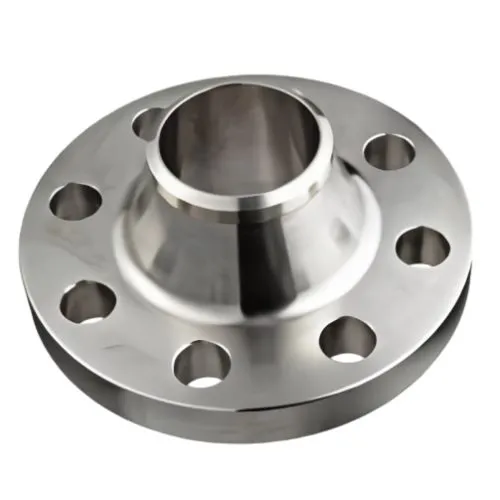-
Cangzhou Yulong Steel Co., Ltd.
-
Phone:
+86 13303177267 -
Email:
admin@ylsteelfittings.com
- English
- Arabic
- Italian
- Spanish
- Portuguese
- German
- kazakh
- Persian
- Greek
- French
- Russian
- Polish
- Thai
- Indonesian
- Vietnamese
- Zulu
- Korean
- Uzbek
- Hindi
- Serbian
- Malay
- Ukrainian
- Gujarati
- Haitian Creole
- hausa
- hawaiian
- Hebrew
- Miao
- Hungarian
- Icelandic
- igbo
- irish
- Japanese
- Javanese
- Kannada
- Khmer
- Rwandese
- Afrikaans
- Albanian
- Amharic
- Armenian
- Azerbaijani
- Basque
- Belarusian
- Bengali
- Bosnian
- Bulgarian
- Catalan
- Cebuano
- China
- China (Taiwan)
- Corsican
- Croatian
- Czech
- Danish
- Esperanto
- Estonian
- Finnish
- Frisian
- Galician
- Georgian
- Kurdish
- Kyrgyz
- Lao
- Latin
- Latvian
- Lithuanian
- Luxembourgish
- Macedonian
- Malgashi
- Malayalam
- Maltese
- Maori
- Marathi
- Mongolian
- Myanmar
- Nepali
- Norwegian
- Norwegian
- Occitan
- Pashto
- Dutch
- Punjabi
- Romanian
- Samoan
- Scottish Gaelic
- Sesotho
- Shona
- Sindhi
- Sinhala
- Slovak
- Slovenian
- Somali
- Sundanese
- Swahili
- Swedish
- Tagalog
- Tajik
- Tamil
- Tatar
- Telugu
- Turkish
- Turkmen
- Urdu
- Uighur
- Welsh
- Bantu
- Yiddish
- Yoruba

Dec . 06, 2024 17:44 Back to list
mandrel bent mild steel tubing
Mandrel Bent Mild Steel Tubing Perfecting the Art of Bend
In the world of manufacturing, the versatility and capabilities of materials dictate the efficacy of end products. Among these materials, mild steel stands out prominently due to its excellent properties, including ductility, malleability, and weldability. One of the most advanced methods of manipulating mild steel into useful shapes is through the process of mandrel bending. This article will explore the significance of mandrel bent mild steel tubing, its applications, advantages, and considerations.
What is Mandrel Bending?
Mandrel bending is a sophisticated technique used to bend metal tubing into specific shapes and angles. Unlike conventional bending methods that can cause deformation or wall thinning, mandrel bending employs a support mechanism known as a mandrel. This device is inserted into the tube during the bending process to maintain the integrity of its internal structure, preventing collapse and ensuring smooth bends. This approach is essential when working with thick-walled mild steel tubing, where maintaining the material's strength during manipulation is critical.
Applications of Mandrel Bent Mild Steel Tubing
The applications of mandrel bent mild steel tubing are manifold
. Industries such as automotive, aerospace, chemical, and construction utilize this technique extensively. In the automotive world, for instance, mandrel bent tubing is often employed in exhaust systems, roll cages, and chassis components, where precise bends are essential for both performance and safety.In the aerospace industry, where weight and structural integrity are paramount, mandrel bending provides components that meet stringent specifications without sacrificing strength. Similarly, in architectural applications, mild steel tubing with mandrel bends can create aesthetically pleasing designs while offering the durability needed for structural support.
Advantages of Mandrel Bent Mild Steel Tubing
mandrel bent mild steel tubing

The primary advantage of mandrel bent mild steel tubing is its ability to create tight, accurate bends without compromising the material's properties. This process reduces the risk of kinks or wrinkles, which are common with traditional bending methods. Consequently, mandrel bending allows for better flow dynamics in fluid transfer applications, making it ideal for exhausts and piping systems.
Moreover, mandrel bending offers repeatability and consistency in production, which is critical for large-scale manufacturing. The precision that comes from this bending method results in reduced material wastage and lower production costs over time. This efficiency is particularly beneficial for industries that require high-volume production with flawless parts.
Considerations in Mandrel Bending
While the benefits of mandrel bent mild steel tubing are clear, there are several factors to consider when opting for this manufacturing process. The choice of material thickness, bend radius, and the type of mandrel used can significantly influence the end result. It is essential to conduct thorough calculations and simulations before beginning the bending process to ensure that the desired specifications are met.
Additionally, while mandrel bending is ideal for creating complex shapes, it may not be the most cost-effective solution for simpler projects requiring less intricate bending. Manufacturers need to assess their project requirements and budget constraints before opting for mandrel bending.
Conclusion
Mandrel bent mild steel tubing represents a combination of modern engineering and practical application. From automotive to aerospace, its versatility is unparalleled, making it an essential component in various industries. With the ability to maintain the integrity of the material while achieving precise, complex shapes, mandrel bending continues to be a preferred method for fabricators around the globe. As technologies evolve and industries demand more efficient processes, the role of mandrel bending in utilizing mild steel tubing will only grow in significance, pushing the boundaries of what is possible in design and functionality.
Latest news
-
ANSI 150P SS304 SO FLANGE
NewsFeb.14,2025
-
ASTM A333GR6 STEEL PIPE
NewsJan.20,2025
-
ANSI B16.5 WELDING NECK FLANGE
NewsJan.15,2026
-
ANSI B16.5 SLIP-ON FLANGE
NewsApr.19,2024
-
SABS 1123 FLANGE
NewsJan.15,2025
-
DIN86044 PLATE FLANGE
NewsApr.19,2024
-
DIN2527 BLIND FLANGE
NewsApr.12,2024
-
JIS B2311 Butt-Welding Fittings LR/SR 45°/90° /180°Seamless/Weld
NewsApr.23,2024











